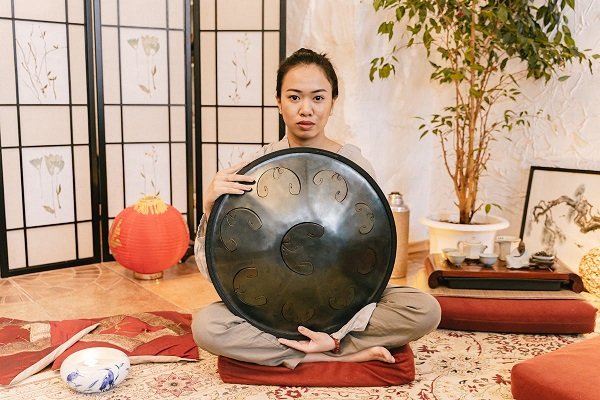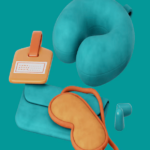Investing in a high-quality meditation cushion is essential for any serious practitioner, but the question of how long will a meditation cushion last remains a key concern. Whether you’re new to meditation or have been practicing for years, understanding the factors that influence the durability of your cushion can help ensure it continues to support you during your practice for years to come.
This guide explores everything from the materials and care involved, to when it’s time for a replacement.

1. Introduction
Why the Lifespan of a Meditation Cushion Matters
The lifespan of your meditation cushion plays a significant role in your meditation experience. A cushion that retains its shape and support helps maintain comfort and alignment during meditation, which can affect your focus and posture. As cushions wear out, they can lose their ability to provide the necessary support, leading to discomfort and potentially poor posture, which can disrupt your practice.
Understanding the Importance of Cushion Quality for Your Practice
A cushion that loses its firmness too soon can disrupt your ability to sit comfortably, impacting your focus. Higher-quality cushions made from durable materials will last longer, keeping you comfortable and supported. Understanding the materials and care techniques can greatly extend the life of your cushion and ensure you get the best value for your investment.
2. Key Factors That Determine Cushion Longevity
Material Type: What Your Cushion is Made Of
The material used in the cushion’s filling and cover directly affects how long it will last. Natural materials like buckwheat and cotton are more durable than synthetic options. Cushions made from high-quality materials typically have a longer lifespan, even with frequent use.
Frequency of Use: How Often You Meditate Matters
The more often you use your cushion, the faster it will wear out. A cushion used daily will lose its shape quicker than one used occasionally. If you meditate multiple times a day, expect to replace or refill your cushion sooner than someone who practices only once a week.
Maintenance and Care: The Lifespan Extension Factor
Proper care is crucial for extending the life of your cushion. Regular fluffing, cleaning, and rotating the filling can keep your cushion in good condition for many years. Regular maintenance can help prevent the filling from compressing and ensure that the cushion retains its shape.
Type of Meditation Practice: How It Affects Cushion Wear
Different meditation styles put varying amounts of pressure on your cushion. Practices like Zazen or Vipassana, which involve long sitting sessions, can cause the cushion to wear down more quickly than shorter mindfulness practices. The type of meditation you do directly influences how long your cushion will last.
3. Material Breakdown: What Affects Cushion Durability?
Buckwheat Hulls: Natural Fill for Longevity and Support
Buckwheat hulls are one of the most popular cushion fillings due to their durability and support. They conform to your body, providing stable support for long sessions. With proper care, cushions filled with buckwheat hulls can last up to 5 years or more. However, they may need to be refilled occasionally, as they compress with use.
Organic Cotton: Softness and Durability Over Time
Organic cotton is a soft, breathable material that’s gentle on the skin, but it can lose its shape more quickly compared to firmer fills like buckwheat. While cotton cushions can last 3-5 years, they may need regular refilling to maintain their shape and support.
Memory Foam: Comfort vs. Wear and Tear
Memory foam cushions are known for their comfort, as they mold to your body’s contours. However, over time, memory foam can lose its resilience and flatten out, particularly with heavy use. These cushions generally last between 2-4 years, and once the foam compresses, it may be time for a replacement.
Kapok: Lightweight but Less Long-Lasting
Kapok is a natural fiber that’s soft and lightweight, but not as durable as buckwheat or cotton. A kapok cushion might last 1-2 years, particularly with daily use. While it provides great comfort initially, it’s not a long-term solution for those who meditate frequently.
Wool and Other Natural Fibers: Eco-Friendly and Resilient
Wool is naturally resilient and breathable, making it a great option for meditation cushions. Wool cushions can last anywhere from 4 to 7 years with proper care. Wool is also great for maintaining warmth during meditation in cooler environments, though it may compress over time and require refilling.
Synthetic Materials: Cheaper but Less Durable
Synthetic cushions, often made from polyester or other artificial fibers, are typically more affordable but are less durable than natural fills. These cushions may last 1-3 years before the material loses its firmness and support. They are an inexpensive option for beginners, but they won’t offer the same longevity as natural fills.
4. How Frequency of Use Affects Cushion Lifespan
Daily Meditation: Wear and Tear on Cushions
Cushions used daily experience more wear and tear, particularly on the filling. For those who practice daily, it’s important to regularly fluff and refill the cushion to maintain its support. Expect to replace the cushion or refill it every 2-3 years, depending on the material.
Weekly Meditation: Moderate Use and Cushion Longevity
With weekly use, your cushion will naturally last longer. Moderate use allows the cushion to maintain its shape for around 4-6 years. However, cushions should still be cleaned and rotated regularly to extend their lifespan.
Occasional Use: How Light Use Extends Cushion Life
For those who meditate only occasionally, the cushion may last 7 years or more. Minimal use means that the material will undergo much less pressure, allowing it to maintain its firmness and comfort for a longer period.
5. Maintenance and Care Tips to Maximize Cushion Lifespan
Cleaning and Washing: Best Practices for Long-Term Care
Regular cleaning helps prevent dirt and moisture buildup. Always remove the cushion cover and wash it according to the manufacturer’s instructions. Most covers are machine washable, but air drying is recommended to avoid fabric shrinkage.
Rotating the Filling: Even Wear and Support
To prevent the filling from becoming compacted in one area, rotate the cushion regularly. This ensures even wear and can help prolong the cushion’s lifespan.
Proper Storage: Preventing Damage from Moisture and Sunlight
Store your cushion in a cool, dry place, away from direct sunlight. Exposure to heat or humidity can cause the filling to break down more quickly, especially if the cushion is filled with natural materials like cotton or buckwheat hulls.
Refilling Buckwheat Hulls: How Often Is Too Often?
Buckwheat hulls naturally compress over time, so it’s a good idea to refill your cushion every 2-3 years. If the cushion feels too flat or uncomfortable, adding more hulls will help restore its firmness.
Repairing Minor Damage: When to Fix vs. Replace
If the fabric has minor tears or seams are coming undone, repairing them is usually more cost-effective than replacing the entire cushion. However, if the fabric is severely worn or the filling is beyond repair, it may be time to invest in a new cushion.
6. How Different Types of Meditation Affect Cushion Wear
Zazen Meditation: High Pressure, High Wear
Zazen, which requires sitting for long periods in a cross-legged position, places a lot of pressure on the cushion. Over time, this can cause the cushion to compress more quickly. If you practice Zazen regularly, plan on replacing or refilling your cushion every 2-3 years.
Vipassana and Insight Meditation: Sitting for Long Hours
Similar to Zazen, these meditation styles require long sitting sessions. Cushions used for Vipassana may wear out faster, especially if they aren’t properly maintained.
Mindfulness Meditation: Shorter Sessions, Less Impact
Shorter meditation sessions generally put less stress on your cushion, allowing it to last longer. With occasional use, your cushion can easily last 5-7 years.
Walking Meditation: Low Impact on Cushions
Walking meditation involves less pressure on the cushion compared to sitting meditations, making it less likely to cause damage. Cushions used primarily for walking meditation may last a decade or more.
7. How to Tell When It’s Time to Replace Your Meditation Cushion
Flattening or Sagging: Losing Support Over Time
If your cushion no longer offers the support it once did and feels flattened, it’s time to consider replacing it or refilling it with new material.
Lumpy and Uneven Filling: The Breakdown of Comfort
When the filling becomes uneven or lumpy, your cushion will no longer provide the comfort and support needed for meditation. In this case, a refill or replacement may be necessary.
Fabric Wear and Tear: Signs of Aging and Need for Replacement
Visible fabric damage like fraying or holes indicates that your cushion is aging and might need to be replaced to avoid further deterioration.
Foul Odors or Mold: Indications of Permanent Damage
If your cushion develops a persistent smell or shows signs of mold, it may be time to replace it, as these issues can be difficult to remedy.
Reduced Cushion Height: A Sign of Long-Term Compression
A noticeable reduction in the height of your cushion is a sign of long-term compression, meaning the cushion’s filling has lost its ability to provide adequate support.
8. Quality vs. Price: The Tradeoff in Cushion Longevity
Investing in High-Quality Cushions: Long-Term Value
High-quality cushions are more expensive, but their durability can make them a better investment over time. Well-made cushions can last for several years, providing better comfort and support.
Are Cheap Cushions Worth It? Cost-Benefit Analysis
While cheaper cushions may seem appealing, they often wear out quickly, especially with regular use. Consider the long-term value of investing in a higher-quality cushion for better support and durability.
Eco-Friendly Options: Durability and Sustainability Combined
Eco-friendly cushions, often made with natural fibers, can be just as durable as non-eco options. Look for cushions made from sustainable materials that offer both durability and environmental responsibility.
9. Popular Meditation Cushion Brands and Their Lifespan
High-End Brands: Long-Lasting Cushions for Serious Practitioners
Premium brands often use durable, high-quality materials that ensure a longer lifespan. These cushions can last up to 10 years, with proper care.
Mid-Range Brands: Balancing Cost and Longevity
Mid-range brands offer a balance of affordability and durability. These cushions may last 5-7 years with regular use and care.
Budget-Friendly Options: Are They Worth It for Long-Term Use?
Budget cushions can be a good starting point, but they may wear out faster. If you’re looking for long-term use, it’s better to invest in a cushion made from more durable materials.
10. How to Choose the Right Meditation Cushion Based on Durability

Assessing Your Meditation Practice and Cushion Needs
Consider how often you meditate and what style of meditation you practice when choosing a cushion. A more durable cushion may be necessary if you meditate daily or practice longer sessions.
Factors to Consider for Maximum Cushion Longevity
The material, thickness, and filling of the cushion will all affect how long it lasts. Choose a cushion with high-quality, supportive materials for longevity.
Choosing the Right Fill and Fabric for Durability
Natural fibers like buckwheat hulls and cotton are typically more durable than synthetic materials. Look for fabrics that can withstand wear, such as sturdy cotton or organic canvas.
11. The Role of Cushion Design in Lifespan
Cushion Shape and Support: How Design Affects Wear
The design of the cushion, including its shape and the distribution of filling, can impact its lifespan. Well-designed cushions that provide uniform support last longer.
Adjustable Cushions: Prolonging Cushion Life with Flexibility
Adjustable cushions allow you to control the level of support, which can help prolong the cushion’s lifespan as you can modify the filling as needed.
Covers and Removable Linings: Easy Maintenance Solutions
Cushions with removable covers are easier to maintain, helping to protect the internal filling from dirt, moisture, and wear.
12. How to Maintain Comfort as Your Cushion Ages
Adjusting Cushion Fill: Customizing Support Over Time
As your cushion ages, you can adjust the filling to match your needs. Adding more material can restore firmness and support.
Layering Cushions for Added Comfort and Extended Life
Layering a thinner cushion on top of an older one can offer extra support and comfort without needing to replace it.
Adding Extra Cushioning: When Your Cushion Needs Help
If your cushion feels less supportive, adding extra cushioning inside or on top can help extend its lifespan without a full replacement.
13. The Environmental Impact of Replacing Meditation Cushions
The Sustainability of Meditation Cushions: Making Eco-Conscious Decisions
Choosing sustainable materials and maintaining your cushion can reduce environmental impact. Opt for eco-friendly options that last longer.
Recycling or Repurposing Old Cushions: Creative Solutions
Instead of discarding an old cushion, consider recycling the filling or repurposing it for other uses, such as in pillows or pet beds.
Choosing Eco-Friendly Cushion Brands for Long-Term Use
Look for brands that prioritize sustainability, using natural, recyclable materials for fillings and covers.
14. Alternatives to Traditional Meditation Cushions
Floor Mats and Rugs: When Cushions Aren’t Necessary
Some people prefer to use floor mats or rugs for meditation, which can be a good alternative when a cushion isn’t necessary.
Foam Pads and Seat Cushions: Budget-Friendly Options
Foam pads can provide enough cushioning for those on a budget, though they may not last as long as traditional meditation cushions.
DIY Meditation Cushions: Custom-Made for Longevity
If you’re crafty, you can make your own meditation cushion using durable materials that fit your personal preferences.
15. Common Myths About Meditation Cushions and Their Lifespan
Myth #1: All Cushions Lose Their Shape in One Year
While cushions do wear down over time, not all lose their shape within a year. Quality cushions can last for many years if cared for properly.
Myth #2: You Can’t Repair a Meditation Cushion
Many meditation cushions can be repaired, whether by adding more filling or fixing small fabric tears. You don’t always need to replace a cushion entirely.
Myth #3: Cheap Cushions Are Always a Waste of Money
While cheap cushions may not last as long, some can still provide sufficient support for beginners or occasional practitioners.
16. How to Refill and Restore Buckwheat Hull Cushions
Refilling Instructions: Step-by-Step Guide
Refilling your buckwheat cushion is easy—simply remove the cover, empty out the old hulls, and add new ones. Make sure to distribute the hulls evenly for optimal comfort.
Benefits of Refill Over Replacement: Cost-Effective and Sustainable
Refilling buckwheat cushions is cost-effective and environmentally friendly, extending the life of your cushion without needing a full replacement.
Common Mistakes When Refilling Buckwheat Cushions
Avoid overfilling your cushion, which can make it too firm, or underfilling, which can reduce support.
17. What Happens to Cushions Exposed to Extreme Conditions?
Cushions in Humid Environments: The Impact of Moisture
Exposing cushions to moisture can cause mildew and mold growth, damaging the filling and fabric.
Extreme Cold and Heat: How to Protect Cushions from Climate Damage
Extreme temperatures can cause the filling to break down. Store cushions in a cool, dry place to avoid this damage.
Travel with Cushions: Protecting Your Cushion on the Go
Use a protective cover when traveling to keep your cushion safe from the elements and physical damage.
18. When Should You Consider Buying a New Meditation Cushion?
When Comfort is Compromised: Understanding the Need for New Cushions
If your cushion no longer offers support or comfort, it may be time to invest in a new one.
Time to Replace vs. Repair: How to Decide
When refilling or repairing is no longer effective, it’s time to replace your cushion.
Evaluating Your Practice Needs and Cushion Condition
Assess the condition of your cushion regularly. If it no longer meets your comfort or support needs, a new cushion might be necessary.
19. Tips for Extending the Life of Your Cushion
Preventing Overuse: How to Protect Cushions from Excessive Wear
Alternate between cushions or use a second one to reduce wear on a single cushion.
Cushion Care Beyond Cleaning: Small Habits for Long-Lasting Comfort
Fluffing and rotating the filling, keeping it clean, and storing it properly will ensure your cushion lasts longer.
Alternative Supports to Give Your Cushion a Break
Try using blankets, towels, or pillows to provide extra support while giving your cushion a break.
20. Conclusion
Summary of Key Takeaways on Cushion Lifespan
How Long Will a Meditation Cushion Last depends on the material, frequency of use, and how well you care for it. Regular maintenance can extend its life for several years, while poor care can shorten it significantly.
Final Thoughts on Choosing and Maintaining Your Meditation Cushion
Choosing a high-quality meditation cushion and following best care practices will help ensure that it serves you well for many years. Regular maintenance, refills, and mindful usage can keep your cushion in great condition for your practice.
FAQs
How Can I Make My Meditation Cushion Last Longer?
By regularly fluffing, cleaning, and rotating the filling, you can extend the life of your meditation cushion. Store it in a dry, cool place and avoid exposing it to moisture or direct sunlight.
What Are the Best Materials for a Durable Meditation Cushion?
Buckwheat hulls, organic cotton, and wool are among the most durable materials. These provide long-lasting support and comfort.
How Often Should I Replace My Meditation Cushion?
Depending on the material and frequency of use, most cushions need to be replaced every 2-7 years.
Can I Fix My Old Meditation Cushion, or Do I Need to Replace It?
Many cushions can be repaired by adding filling or fixing minor fabric damage. Only replace it when repairs are no longer effective.
Are Eco-Friendly Meditation Cushions Durable Enough for Regular Use?
Yes, eco-friendly cushions made from natural materials like organic cotton and wool are just as durable as non-eco options, and they offer long-term support.
More to Explore:
Anti-Allergy Pillows Aromatherapy Pillows Meditation Pillows
Bamboo Pillows Natural Latex Pillows Organic Cotton Pillows Recycled Material Pillows















